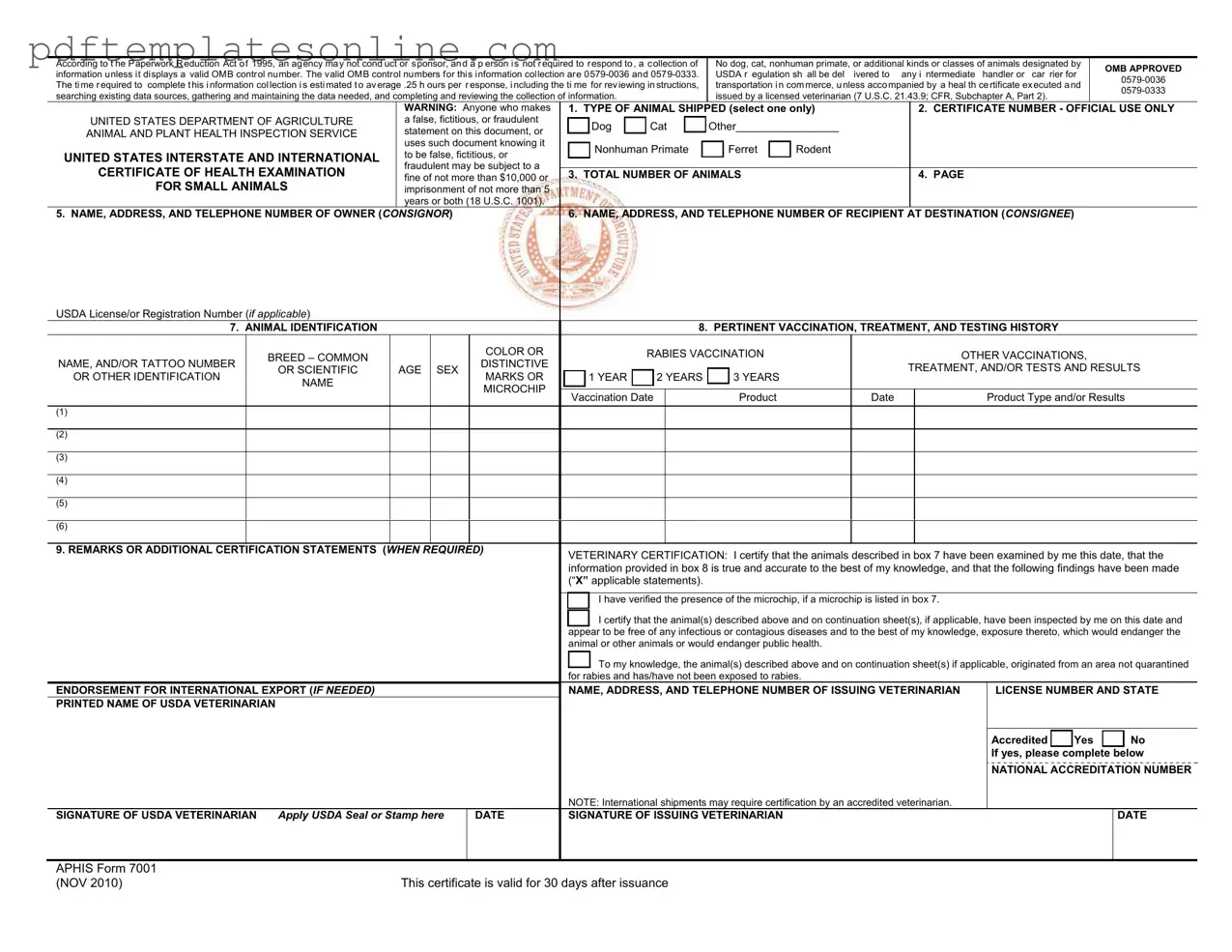Detailed Guide for Writing Aphis 7001
Filling out the APHIS 7001 form is an important step for anyone involved in the interstate or international transport of animals. This process ensures that all necessary health information is documented accurately. Follow the steps outlined below to complete the form correctly.
- Type of Animal Shipped: Select only one option from the list provided: Dog, Cat, Nonhuman Primate, Ferret, Rodent, or Other.
- Certificate Number: Leave this section blank, as it is for official use only.
- Total Number of Animals: Enter the total number of animals being shipped.
- Page: Indicate the page number if this is part of a multi-page document.
- Owner's Information: Fill in the name, address, and telephone number of the animal's owner (consignor).
- Recipient's Information: Provide the name, address, and telephone number of the recipient at the destination (consignee).
- USDA License/Registration Number: Include this number if applicable.
- Animal Identification: List details such as breed, common name, color, age, sex, and any distinctive marks or identification numbers (e.g., microchip).
- Pertinent Vaccination, Treatment, and Testing History: Document the vaccination details, including rabies vaccination and any other relevant treatments or tests.
- Remarks or Additional Certification Statements: Add any necessary remarks or additional certification statements, if required.
- Veterinary Certification: The issuing veterinarian must certify that the animals have been examined and that all provided information is accurate. This includes checking for microchips and confirming the animals are free from diseases.
- Endorsement for International Export: If needed, fill in the name, address, and telephone number of the issuing veterinarian, along with their license number and state.
- Signature of USDA Veterinarian: The USDA veterinarian must sign and date the form, applying the USDA seal or stamp if required.
- Signature of Issuing Veterinarian: The issuing veterinarian must also sign and date the form.
Once the form is completed, ensure that all sections are filled out accurately. The completed APHIS 7001 form is valid for 30 days after issuance, so plan accordingly to meet any transport timelines.
